Overview of artillery. Part of 8. Intelligence, surveillance and targeting systems
The Israeli company Rafael has developed two systems for determining the coordinates of the target Pointer and Micro-Pointer, which have similar characteristics, but differ in mass. These devices are mounted on a tripod and have an adapter at the top for mounting various devices, such as day / night multifunctional binoculars. The systems include a digital magnetic compass, a GPS receiver and a functional computer. On both axes, the angular accuracy is 1 mil, the positioning accuracy is 3-5 meters, while the orientation accuracy on the true pole is 1 ° in the case of measurement with a digital magnetic compass and 1 milliradian by means of a visual orientation on the true pole. The computer has a four-color color touch screen, several push buttons, some of them are user-defined; Two handles with push buttons are used to orient the entire system, as well as to control target designation and an installed device. To prevent the enemy from detecting, Pointer and Micro-Pointer use advanced patented digital targeting technology, which does not require a laser range finder, although, if necessary, range finders can be used. After finding the true pole and determining the exact location using GPS, the system uses geographic infrastructures (digital terrain model and digital 3D models for the target area) to accurately calculate the distance to the target, that is, it remains completely passive. The system uses digital formatted maps for the localization process. For integration with information management systems, RS232 and RS422 connectors are provided. Without batteries, the Pointer has a mass of 4,1 kg, and the Micro-Pointer has a mass of 0,85 kg. Both systems are in the armaments of Israel and other countries, including one NATO country.
The Enhanced Joint Terminal Terminal Attack Controller Laser Target Designator (E-JTAC LTD) offered by Elbit Systems of America is one of the lightest targeting systems on the market.
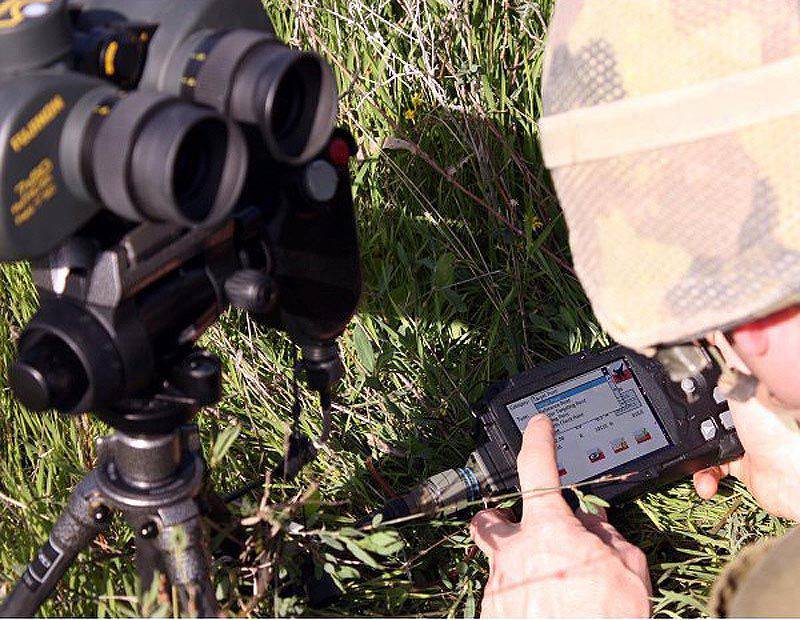
Rafael has developed a passive target range measurement system based on the geographical infrastructure and implemented in its Pointer and Micro-Pointer target positioning systems.
Coris-Grande Targeting Instrument is offered by Stelop, a division of Singapore-based ST Electronics
Stelop, part of Singapore-based ST Electronics, offers its Coris-Grande targeting device. The two-kilogram device (including batteries) includes a color day camera, an uncooled bolometric matrix of 640x480 pixels, eye-safe laser range finder (1,55 μm wavelength Class 1M), a GPS receiver and a digital compass. Images are displayed on a color SVGA display, which can also be displayed with a crosshair, the system allows you to capture a frame and download the image to a computer via the 2 USB connector; There is the possibility of digital zoom x2.0. The Coris-Grande instrument has an 2 ° accuracy in azimuth and a circular permissible deviation (CEP) of five meters; the system can operate in the military system of rectangular coordinates or latitudinal-longitudinal coordinate grids. According to the company Stelop, for the thermal imaging channel 0.5, the probability of detecting a person is more than 90 km and a light machine is more than 1 km, and the corresponding recognition ranges are 2,3 and 380 meters. For the daytime camera, the detection ranges are 860 km and 1,2 km and the recognition range of 3 and 400 meters. The Coris-Grande device is ready for operation in 1000 seconds after it is turned on; it is powered by a lithium-ion battery that guarantees six hours of operation. The device is tested in actual operating conditions, since it is in service with the Singaporean army, it was also exported to South Korea and Indonesia. In order to increase the detection and recognition range, Stelop developed an improved version of the Coris-Grande targeting device with a laser rangefinder on the 10 km and a lens with a focal length 5 mm (instead of the original one with a focal length 35 mm). The first systems of the new version are already available for demonstration and Stelop is ready to deliver them via 25-6 months after the conclusion of the contract.
There are two systems in the Northrop Grumman catalog that are designed for advanced aviation gunners or spotters of fire. Both devices weigh less than 0,9 kg with rechargeable batteries and can be operated with one hand. The main difference between Coded Spot Tracker (CST) and Multi-Band Laser Spot Tracker (MBLST) is that the first thermal imager operates in the long-wave infrared region, while the second one operates in the short-wave infrared region. The CST features an uncooled 640x480 sensor, a wide 25 ° x20 ° field of view and a narrow 12.5 ° x10 ° field of view with x2 electronic zoom. It can track up to three marker spots at the same time, the 800x600 SVGA display shows three colored diamond icons, red, green and blue icons correspond to the pulse repetition rate code shown at the bottom of the image. The CST is powered by three CR-123 lithium batteries.
The advantages of the MBLST thermal imager, operating in the mid-IR region of the spectrum, are in less atmospheric scattering and detection of a laser pulse at the pixel level. Its 11 ° x8.5 ° field of view can be reduced due to the electronic magnification of x2, an external optical magnifier with a multiplicity of x2 is optionally available. To show the laser spot on a black and white image, a translucent overlay is used, with the spot itself highlighted with a marker. The MBLST device allows the spotter to see the spot from the laser pointer at distances over 10 km. The device is powered by four CR-123 or AA elements with a continuous operating time of two hours.
L-3 Warrior Systems has developed the LA-16u / PEQ Handheld Laser Marker handheld laser pointer. A gun-like device is capable of emitting NATO-coded laser beams and highlighting targets; its beam is easily detected by platforms equipped with tracking devices, which reduces the time to transfer targets from a few minutes to a few seconds. For more precise aiming at the target, a miniature collimator sight is mounted on top of the pistol.
Laser target designators
In 2009, the US military began a search for the system in order to reduce the load on the fire spotters and simultaneously increase their ability to detect, locate, target, and highlight targets for laser and GPS guided munitions. The new system received the designation Joint Effects Targeting System (JETS - fire guidance and synchronization system). It consists of two components: the Target Location Designation System (TLDS) target coordinate system and the Target Effects Coordination System (TECS) fire coordination and synchronization system. TLDS is a manual reconnaissance and targeting device; the following design characteristics were established for it: round-the-clock target identification range is greater than 8-4 km, positioning error is less than 10 meters by 10 km, distance determination at a distance of more than 10 km, infrared illumination range at night more than 4 km, laser spot tracking device range more than 8 km, target range for fixed and mobile targets more than 8 km using standard NATO coding. The base system should weigh less than 3,2 kg, while the entire system, including a tripod, batteries and cables should weigh no more than 7, 7 kg. The TECS device is coordinated with the TLDS and provides networking and automatic communication, allowing you to plan, coordinate and fire, as well as perform guidance on the final part of the trajectory. The system will be supplied to advanced fire, army, air force and marine infantry spotters. At the end of 2013, two companies, BAE Systems and DRS Technologies, received one-year contracts for the development of an experimental system worth 15,3 million and 15,6 dollars, respectively. These two companies design and manufacture prototypes in the framework of the stage of complete development of prototypes. It is planned to deliver the first JETS systems at the end of 2016 of the year.
For the JETS system, BAE Systems has developed a handheld measurement, intelligence and target designation device Hammer (Handheld Azimuth Measuring, Marking, Electro-optic imaging and Ranging). Not much is known about this development, only the day and night channels, an astronomical compass, a gyrocompass, a digital magnetic compass, a GPS receiver SAASM (anti-interference module with selective accessibility), an eye-safe laser range finder, a compact laser marker and open digital communication interface. The JETS Hammer variant passed the project expertise in February of the 2014 of the year and, according to BAE Systems, it not only weighs half the size of current systems, but is also significantly cheaper. Each company must supply experienced systems to evaluate 20.
The AN / PEQ-1C SOFLAM (Special Operations Forces Laser Acquisition Marker) laser target designator, created by Northrop Grumman, was used in operations in Afghanistan and Iraq by special units, advanced observers, gunners and spotters. The device weighs 5,2 kg, it includes a laser designator (a yttrium-aluminum garnet laser with diode-pumped neodymium) with passive cooling capable of marking a target at a distance of more than 10 km. The laser operates at a wavelength of 1,064 μm with a pulse energy of 80 milliJoules and is used not only for targeting with user-programmable pulse repetition frequency codes, but also for measuring the range, in this mode its range is 20 km. The device has an RS-422 connector for exchanging information with external devices, day optics with x10 magnification and 5 field of view ° x4.4 °; Three Picatinny rail allows you to install night vision systems. The SOFLAM device is powered by a single BA 5590 element. It is better known on the market under the designation Ground Laser Target Designator (ground laser designator) III or abbreviated GLTD III, representing the development of the previous model GLTD II. Improvements touched mainly the masses, it became easier on 400 grams, while the characteristics and power consumption remained the same.
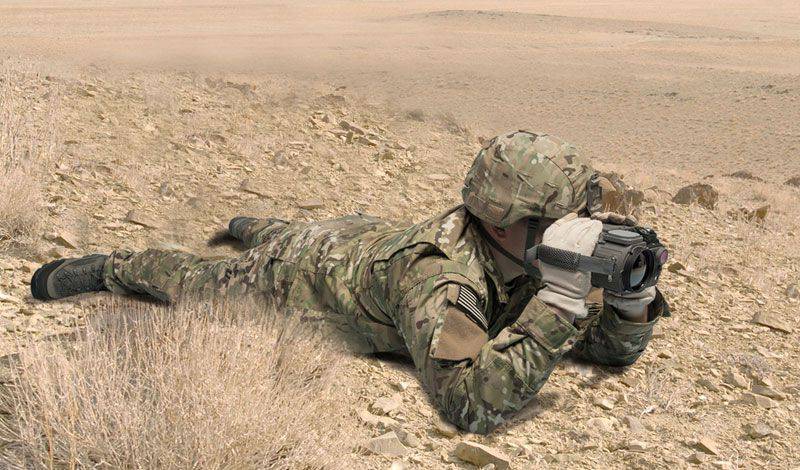
BAE Systems doesn’t talk much about the Hammer device, except that an astronomical compass is built into it to improve accuracy.
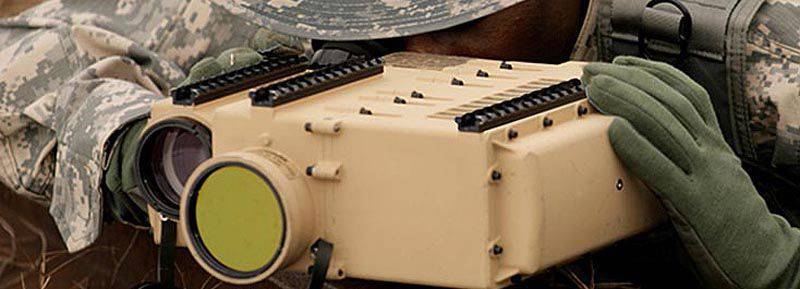
The AN / PEQ-1C Soflam has been widely used in Iraq and Afghanistan.
Northrop's larger Lightweight Laser Designator Rangefinder (LLDR) laser finder has a total weight of 16 kg and consists of two main subsystems: the Target Locator Module (TLM) distance meter with 5,8 kg and the target designator Laser Designator Module (LDM) with 4,85 kg. . The TLM module is equipped with a cooled thermal imager with a matrix of 640x480 pixels with a wide field of view 8.2 ° x6.6 ° and a narrow field of view 3.5 ° x2.8 °, the electronic zoom allows you to get the field of view 0.9 ° x0.7 °. The day channel is based on a high-resolution CCD camera with a wide 4.5 ° x3.8 ° field of view, a narrow 1.2 ° x1 ° field of view and an x2 electronic zoom. The module also includes a GPS PLGR receiver (a lightweight, high-precision GPS receiver), an electronic clinometer, and a Class 1 laser rangefinder with a maximum range of 20 km. The LDM target module module laser can designate a target at a distance of up to 5 km using NATO codes I and II and A. The device has RS-485 / RS-232 connectors for data transmission and RS-170 for video transmission. Power is supplied from the BA-5699 element, the BA-5590 battery is used only for the operation of the TLM module.
The “revolutionary” enhancement was implemented in the laser rangefinder LLDR 2, in which the TLM module was left, but at the same time a new module with a diode-pumped laser module (DLDM) was added. This module is much lighter, with the same characteristics its mass is 2,7 kg. Further development led to the high-precision targeting system LLDR-2H, consisting of a new TLM-2H rangefinder module with 6,6 kg mass and a slightly modified DLDM module with 2,8 kg mass; the entire system with a tripod, battery and cables weighs 14,5 kg. The TLM-2H daytime channel is based on a high-resolution CCD camera with wide 4 ° x3 ° and narrow 1 ° x0.8 ° fields of view and electronic magnification x2; its recognition range during the day is over 7 km. The thermal imaging channel has a wide field of view 8.5 ° x6.3 ° and a narrow field of view 3.7 ° x2.8 °, as well as electronic zoom x2 and x4, which allows you to recognize vehicles at night at a distance of more than 3 km. The device also includes a laser rangefinder at 20 km, a GPS / SAAMS receiver, a digital magnetic compass and a high-precision astronomical azimuth unit. Using the latter, the target positioning error is reduced to 10 meters per 2,5 km. The range finder TLM-2H is capable of catching the spot of the target designator at a distance of 2 km, day and night. The DLDM laser pointer provides target range for fixed targets during the day 5 km and at night 3 km, moving targets during the day and night 3 km. The LLDR 2 system is powered by the same BA-5699 and BA-5590 batteries, which provide 24 hours of continuous operation.
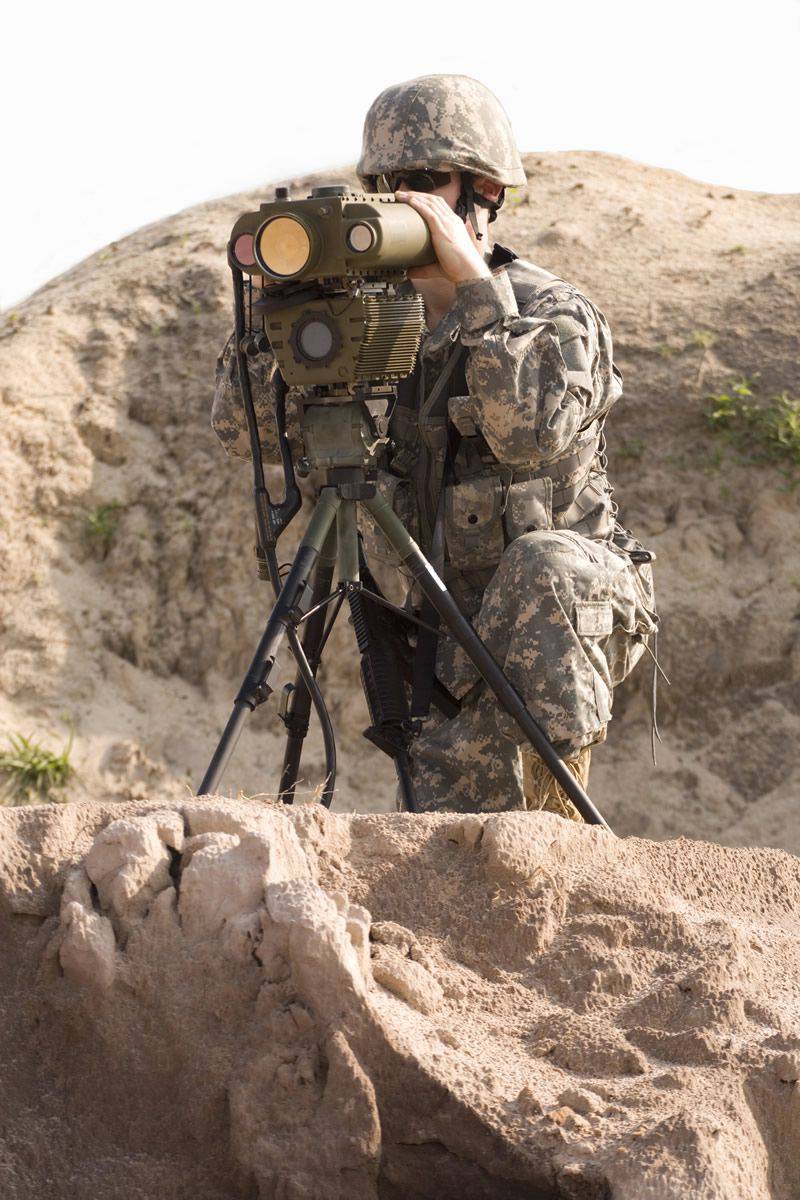
The laser target-rangefinder LLDR consists of a rangefinder module and a target-pointer module and can highlight a target at a distance of 5 km
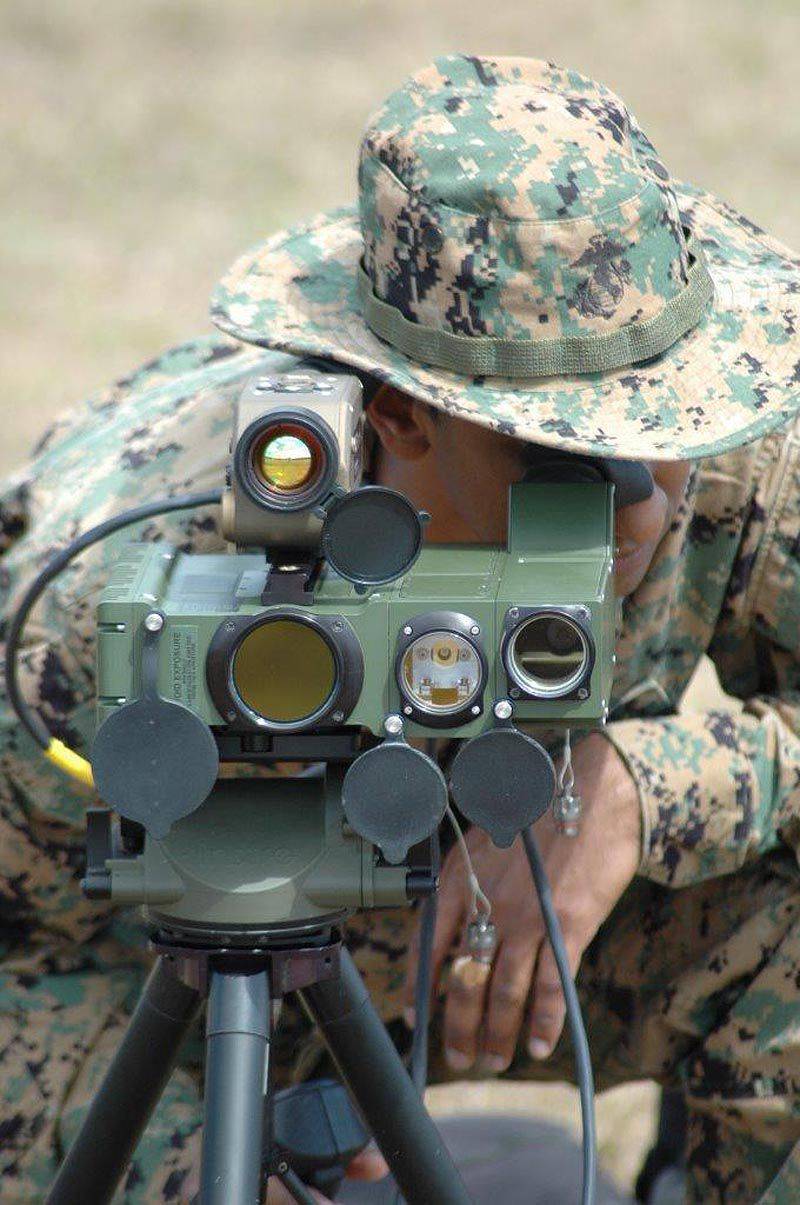
Scarab Tild-A Laser Designator from L-3 Warrior Systems can highlight targets at ranges up to 5 km
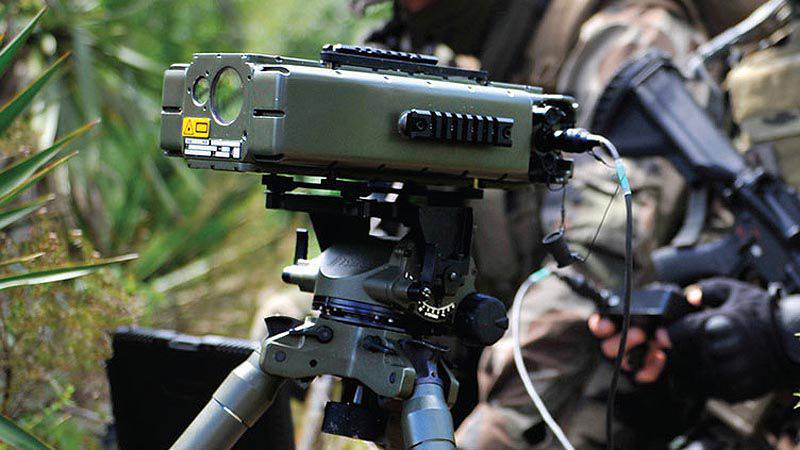
British soldier ready to target with Thales TYR; On the photo, the device is installed at the digital monitoring station GonioLight
L-3 Warrior Systems-Advanced Laser Systems Technologies has developed a Scarab TILD-A laser designator with a diode-pumped laser, which, having a beam energy from 80 to 120 millijoules, is able to highlight targets at a distance of 5 km. The device includes a target designator, tripod, batteries and a remote control. The daylight optics module is mounted on the left, it has an x7 magnification and an 5 ° field of view, with target data overlaid on the image on the display. Compliant with the NATO Band I and II codes, the Scarab target designator guarantees 60 minutes of continuous target designation from a single battery. A thermal imager with a laser spot observation function can be installed on the Picatinny rail, adding less than one kg to the system. This device is based on a cooled 640x480 matrix operating in the mid-IR region of the spectrum; 5 km detection range and 3 km recognition of any standard target with 2,3x2,3 meter sizes are 5 km and 3 km, respectively. At the end of 2013, Warrior Systems-ALST received an order from South Korea with an initial value of 30 million dollars, these target designators are intended for the local Air Force and the Marine Corps.
The French company Thales offers a laser target Tyr weighing 5 kg, which can produce a laser pulse with an energy of more than 70 millijoules. The maximum range of action is 20 km, on the range of target designation is no data. The day channel has a 2.5 ° x1.9 ° field of view, the reticle is superimposed on the display image. The Tyr target designator is equipped with Picatinny slats and can easily interface with other Thales intelligence, surveillance and targeting systems. Another target designator of this company, LF28A, weighs slightly more up to 6,5 kg, it provides a target designation range of 10 km. The device has a day sight with an increase of x10 and a field of view 3 °; the target designator is powered by lithium or nickel-cadmium batteries inserted with one click.
The French company CILAS has developed a lightweight version of its DHY 307 ground laser pointer. The new, more compact device received the designation DHY 307 LW, it weighs half the size of the previous model, only 4 kg. The laser spot monitoring camera is built into the target designator; it can be connected to high-precision distance measuring and goniometric devices (goniometers), as well as to thermal imagers. Its performance is even higher than that of the original model, the range of target designation increased from 5 to 10 km while maintaining the pulse energy of the 80 laser beam millijoules. The target designator can memorize not only NATO codes, but also Russian and Chinese ones.
The Elbit Rattler-G light pointer in USA is known as Director-M. The aiming is carried out with the help of daylight optics, which has an increase in x5.5, the codes of pulse repetition, battery charge and laser modes are displayed on the OLED display. The laser marker / target designator has an 27 pulse energy of millijoules, the pulse duration is 15 nanoseconds, the beam divergence is less than 0,4 milliradian, the target illumination distance of the NATO standard is 3 km, the buildings are 5 km. The coded-beam illumination range is 6 km, while the indication range of 20 km. The Rattler-G has a built-in optical aiming device with a power of 0,8 W at a wavelength of 0,83 μm and 3 milliwatts at a wavelength of 0,63 μm. Picatinny rail at the top of the device allows you to install other optical systems that can be combined with the reference direction using laser pointers. The Rattler-G target designator weighs 1,7 kg with CR123 batteries, providing 30 minutes operation time at standard temperature. The Director-M for the US market retains most of the characteristics of the Rattler-G, but its laser pointer has a high 1 W power when the energy of the 30 beam is milliJoule. Without an eyepiece, the length of the instrument is 165 mm, width 178 mm and height 76 mm.
To further alleviate the load on the soldier, Elbit Systems developed a target designator in the form of a Rattler-H pistol with a pulse energy 30 of millijoules and the same range as that of the Rattler-G. The device has no optical channel, but an aiming device can be installed on the Picatinny rail, and in the case of long-range target designation, the interface connector allows the device to be mounted on a tripod. The key advantage of the Rattler-H designator is its mass - just 1,3 kg with a CR123 battery.
The Portable Lightweight Designator / Rangefinder II or PLDRII laser 6,7 kg portable portable range finder is on a completely different level. The target designation ranges for the tank type target are 5 km and the 10 km building, while the laser pulse energy is regulated from 50 to 70 millijoules. The complex includes an aiming device with x8 magnification and 5.6 ° field of view (laser spot monitoring camera with 2.5 ° field of view), the image is displayed on an 3,5-inch display. A GPS receiver, an electronic compass, and a tactical computer for calculating target coordinates are built into the PLDR II, and there are two Picatinny slats for installing additional devices, such as a thermal imager. The system is designed for long-range targeting, it consists of a panoramic head and a light tripod. Several countries bought this target designator, and in 2011, by the American Marine Corps, it was purchased under the designation AN / PEQ-17.
The French company CILAS has developed a light ground laser designator DHY 307 LW weighing just 4 kg
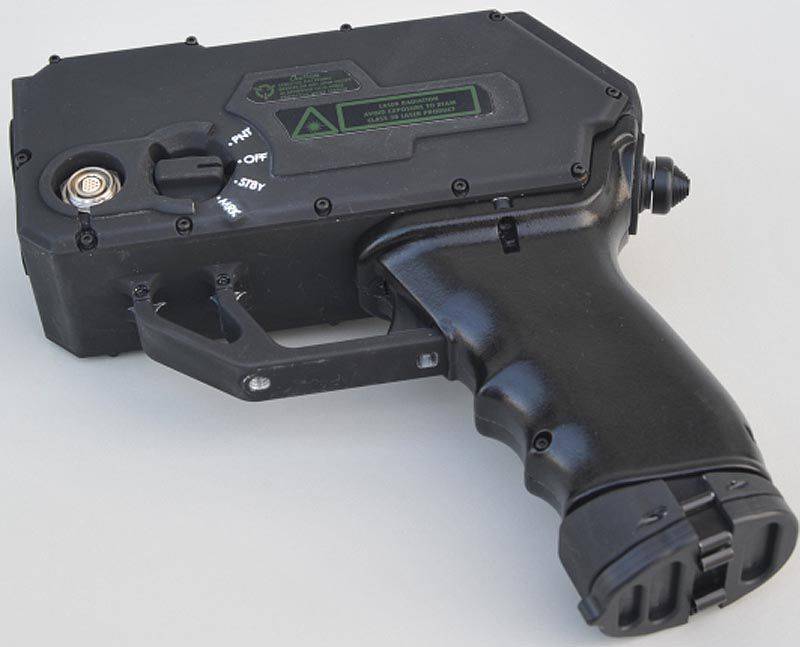
Rattler-H Pistol Type Target Pointer with X Weight of 1,3 kg from Elbit is able to highlight targets for aerial platforms
Elbit Systems has also developed a Serpent laser target rangefinder with even longer ranges, respectively 8 km for a tank type target and 11 km for large targets, measuring the distance is 20 km with an accuracy of 5 meters. Its aiming characteristics are the same as those of the PLDR II, but the laser spot surveillance camera is optional. The designator itself weighs 4,63 kg, a panoramic head, a light tripod, a battery and a remote switch are included.
For targeting and target designation, the Russian company Rosoboronexport offers a portable Malachite automated fire control system, which is divided into three separate subsystems: a laser target indicator-range finder, a digital station, a remote commander with a computer and satellite navigation equipment. There is no data on the energy of the laser pulse, but the range of the complex is quite satisfactory, 7 km for a tank-type target during the day and 4 km at night, 15 km for large targets. The whole system is quite heavy, for daytime work, the total weight with a tripod is 28,9 kg, when adding a thermal sight, it increases to 37,6 kg. The positioning of the Malachite complex is performed using the GLONASS / GPS space navigation system.
Measurement
In order to reduce total errors in preparation and firing, three main factors need to be taken into account: the location and size of the target, information about the weapons and ammunition system and, finally, the positioning error of the firing unit. Measurement is one of the methods used primarily to improve accuracy in determining the size and location of targets. According to the National Geographic Intelligence Agency, measuring the coordinates of a target is “the process of measuring a topographic element or location on earth and determining absolute latitude, longitude, and height. In the process of targeting, errors that occur both at the source of measurements and at the time of measurement should be dismantled, understood and transmitted to the appropriate control centers. In order to obtain coordinates, measurement tools can use a variety of techniques. They may include (but not limited to) direct reading of stereopairs from the Digital Precise Point Database (DPPDB) point placement database in stereo or mono mode, geolocation with multiple images, or indirect image correlation from this database. ”
The US Special Forces use at the unit level as a measurement program the so-called Precision Strike Suite, but since it is a secret, little is known about it. Artillery units of the lower echelon use such a kit under certain conditions, for example, when using a network with a secret Internet Protocol. This reduced the measurement time from 15-45 minutes in Iraq and Afghanistan (when these capabilities were available at hull level) to about 5 minutes; currently, the artillery division can conduct them independently. Similar capabilities are also available at higher echelons, using systems such as, for example, CGS (Common Geographical Survey Services - Common Georeferencing Services) developed by BAE Systems (this modular set of software services is able to calculate accurate, three-dimensional coordinates), as well as a software package of geospatial intelligence. SOCET GXP of the same company.
Radar
When searching for targets, you can do without eyes, especially in the context of artillery systems. Radar counterbattery (serif artillery strongholds) in this case are the main means. Their role is especially noticeable in the defense of their own forces, where they warn subunits and allow their means of action to react almost in real time; in addition, they can provide corrective data for their own and allied artillery.
The radar AN / TPQ-36 Firefinder has been in service with the American army for several years now. Originally developed by Hughes (now part of Raytheon), this system is currently manufactured by the Thales-Raytheon-Systems consortium. The radar is mounted on a trailer towed by a Humvee armored vehicle, which also carries an operational control point. The second Humvee armored car carries a generator and tows a spare generator, while the third vehicle in the unit carries the necessary cargo and performs reconnaissance functions. The Firefinder radar can track simultaneously up to 10 targets with ranges of 18 km for mortars, 14,5 km for artillery guns and 24 km for rocket launchers. The latest version of (V) 10 is equipped with a new processor, which reduces the number of boards from nine to three and provides unlimited potential for further upgrades. The same processor is part of the radar AN / TPQ-37. This longer range radar is mounted on a trailer towed by an 2,5-ton truck. Its latest version (V) 9 (also known as RMI) features a completely reworked transmitter with 12 air-cooled power amplifiers, a high-power radio frequency adder and a fully automatic transmitter control unit. Along with the new version, a new control station based on the Humvee car with two jobs was entered into service.
Originally known as EQ-36 (E means improved), the counterbattering radar AN / TPQ-53 (Q-53 for short) manufactured by Lockheed Martin was developed in 2007 in collaboration with SRC and then quickly deployed in the lower echelons to protect their units. The US Army has now acquired 84 such radar, Singapore, in turn, bought six such systems. The Q-53 radar can operate in 360 ° or 90 ° mode; the first mode allows you to detect missiles, artillery shells and mortar mines at ranges of about 20 km. In 90 ° mode, he can determine the firing positions of rocket launchers at a distance of 60 km, artillery shells at a distance of 34 km and mortars at a distance of 20 km. The Q-53 radar is installed on an 5-ton FMTV truck (which tows a trailer with a generator), the second truck carries a control point and a spare generator. This system requires only four people to maintain, compared to six for the Q-36 radar and 12 for the Q-37 radar.
US special operations forces also needed a counter-battery counter-strike radar, preferably compatible with amphibious operations. Starting with the AN / TPQ-48 radar, SRCTec has developed a more reliable and durable AN / TPQ-49 version, based on a non-rotating antenna with electronically controlled 1,25 beam diameter meter, which can be mounted on a tripod or tower. When an approaching projectile is detected, a warning is issued, and immediately after collecting a sufficient amount of data to establish a firing position, they are sent to the control center.
The heavier AN / TPQ-50 version also manufactured by SRCTec is mounted on a Humvee vehicle. It retains the same ranges as the previous radar, but has increased accuracy, the shot spot tracking error is 50 meters per 10 km, compared to 75 meters per 5 km from the Q-49 radar. The Q-50 radar was deployed as part of a priority program for the US military as an interim solution until larger radars appeared.
The company currently offers its multi-functional AESA 50 radar with an active phased antenna array consisting of more than 100 transceiver modules. Together with Lockheed Martin, SRC also developed the Multi Mission Radar (MMR) radar, which is currently under development. Radar scans in sector ± 45 ° in azimuth and in sector ± 30 ° in elevation, while its antenna rotates at a speed of 30 revolutions per minute. This radar can be used to monitor the airspace and control air traffic, fire control, and target designation of enemy artillery. When performing the last of the listed tasks, the antenna is stationary, it closes the 90 ° sector and can track up to 100 projectiles simultaneously, while ensuring the coordinates of the source of the shot are determined with an accuracy of 30 meters or 0,3% of range. The radar can be easily installed on Humvee cars.
The Q-53 and Q-50 radars will be part of army programs planned for the 2014-2018 years, the implementation of which will improve the protection of their own forces.
At the end of 2014, the United States Marine Corps issued a contract worth $ X million for the initial production of the AN / TPS-207 Ground / Air Task Oriented Radar (G / ATOR) radar to Northrop Grumman. The new radar has an antenna with electron beam scanning, based on receiving and transmitting modules on gallium nitride. This three-axis radar, operating in the S-band (frequencies from 80 to 1,55 MHz), will allow the Marine Corps to get a multi-functional tool, since it will be able to conduct airborne surveillance, monitor air movement and determine the coordinates of firing positions; at the scheduled time, it will replace three radars at once and the functionality of two outdated models, one of which is the AN / TPQ-5,20 / 36 radar for detecting artillery positions and the other is air defense radar. The corps plans to use it in three tasks: short-range surveillance / air defense radar, counter-battery radar and air traffic control radar at airports located in contingents stationed abroad. The radar consists of three main subsystems: the radar itself on a trailer towed by an MTVR truck, the power supply system on the truck, communication equipment on an M37A1151 Humvee armored car. The contract from 1 of the year provides for the supply of 2014 systems in 4-2016 years. After several contracts for radar installments, it is planned to begin full-scale production of systems around 2017.
AN / TPQ-53 counterbattering radar was developed by Lockheed Martin in 2000's and is in service with the US and Singapore armies.
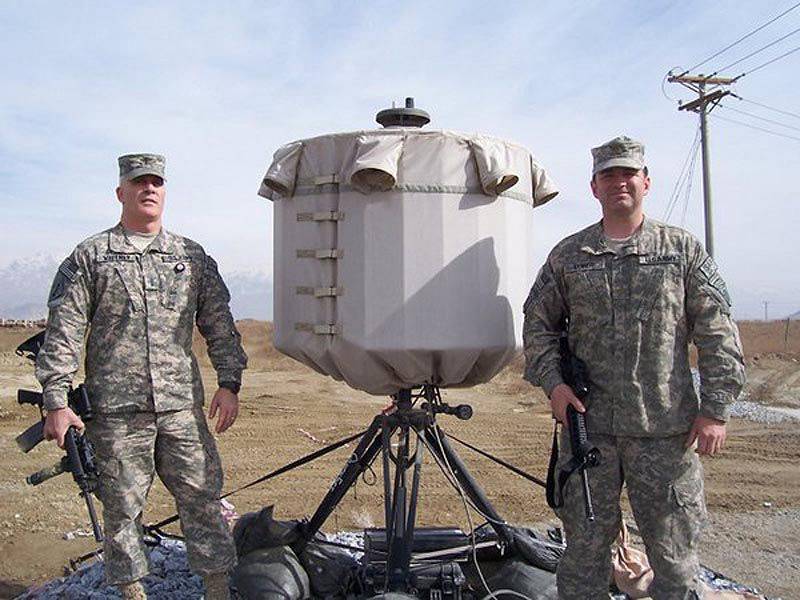
The AN / TPQ-48 (49) mortar support pitch radar, based on a non-rotating antenna, was developed by SRC for US special operations forces.
Radar AN / TPQ-50 installed on the car Humvee; this radar is mainly used as an interim solution until larger radars appear
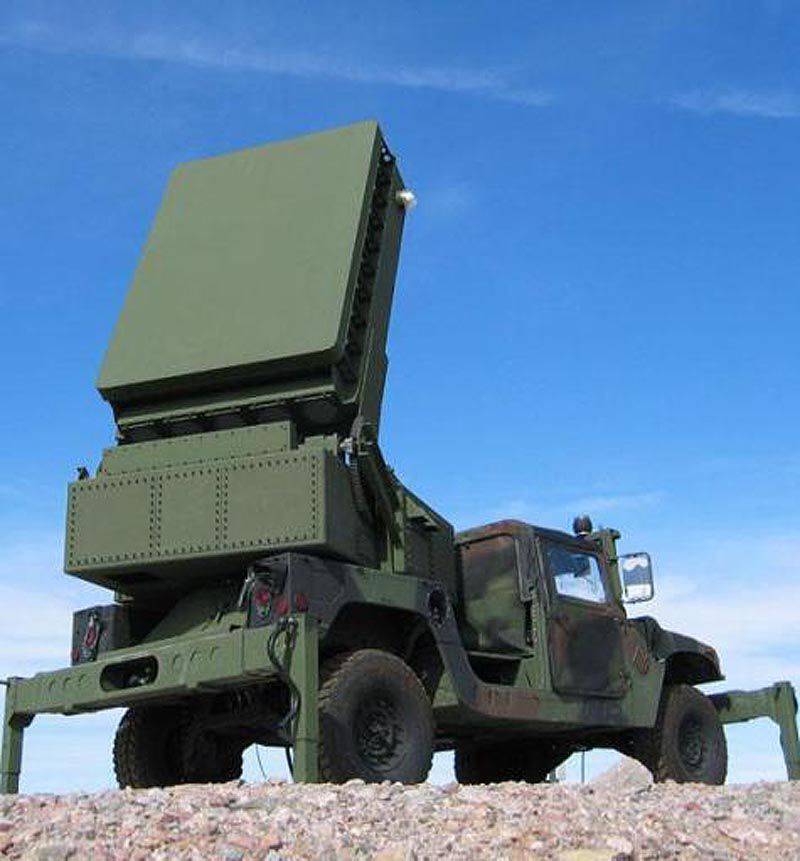
The Multi Mission Radar, developed by SRC and Lockheed Martin, is at the prototype stage and is intended for air defense, counter battery control and air traffic control.
On the opposite shore of the ocean, Arthur's Saab counterbattery radar is very popular. It received orders from at least a dozen countries, including the Czech Republic, Greece, Italy, Norway, South Korea, Spain, Sweden and the UK, in which most of the systems are deployed. The radar can be installed on various vehicles. For example, Sweden and Norway install it on an articulated all-terrain vehicle BV-206, other countries have chosen a secure version based on a five-ton truck. Preparation of the radar for work takes less than two minutes, besides, it demonstrated good operational readiness at the level of 99,9%. The antenna consists of 48 individual comb-shaped waveguides, which guarantees redundancy in the presence of a projectile or splinter.
Another system from Europe in this category, albeit a larger one, is the Cobra Counter Battery Radar, developed in the late 90s by a consortium of Airbus Defense & Space, Lockheed Martin and Thales. The radar is installed on an 8x8 cargo platform and includes an active phased array antenna with 2780 transceiver modules, electronics, a power unit and a control and monitoring station. The antenna can scan in a sector up to 270 °, in less than two minutes it captures up to 240 shots. Serviced by a crew of just two people, the system is deployed in less than 10 minutes; it can work autonomously or in the same network with other systems and control points.
Cobra counterbattery radar
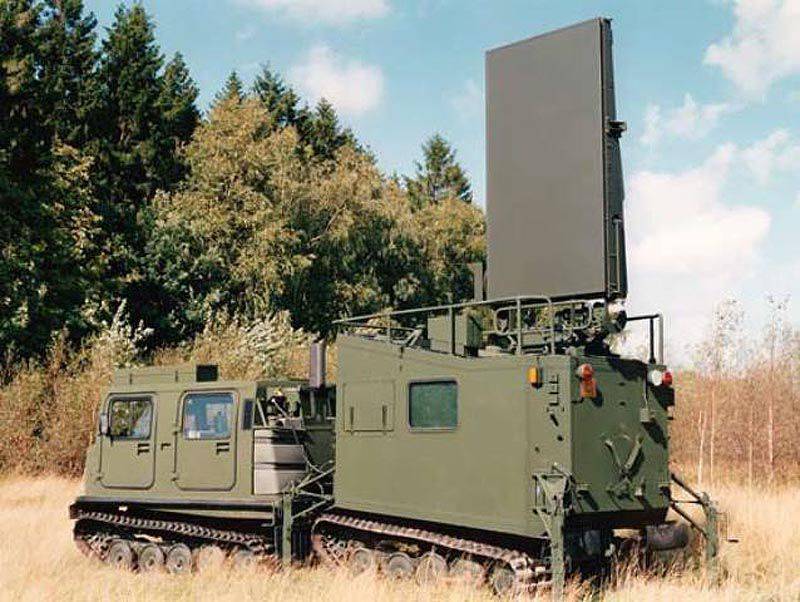
Saab Arthur counterbattering radar is in service with many countries, where it is installed on various platforms, such as the articulated BV206 armored personnel carrier (pictured)
Arthur radar screen during mortar firing. In defensive mode, the radar tracks flying projectiles and accurately calculates the firing position
IAI Elta's multifunctional ELM-2084 radar operating in the S-band can be used for aerial surveillance, air traffic control and firing position determination
The Israeli company IAI Elta has developed a highly mobile Doppler radar ELM-2138M Green Rock. It can be used for air defense tasks and notching artillery strongholds. Its two phased array antennas, scanning in azimuth and elevation angle 90 °, can be installed on very small platforms, for example, ATVs. The stated radar range is 10 km.
IAI Elta also developed the ELM-2084 multi-function radar, which can be used to localize artillery and monitor airspace. The radar has a flat antenna with electronic scanning; in the target search mode, it operates in a fixed position, scanning 120 ° in azimuth and 50 ° in elevation over a distance of about 100 km. The accuracy of the radar is 0,25% of the range, every minute it can capture up to 200 targets.
Outside of the western world, take as an example the Chinese 704-1 radar, which has a maximum range of 20 km for 155-mm artillery and an accuracy of 10 meters to the range 10 km and 0,35% of long range. The electron beam scanning antenna scans in the ± 45 ° sector in azimuth and 6 ° in elevation, and the antenna can also rotate in the ± 110 ° sector with elevation angles –5 ° / + 12 °. On one 4x4 truck, an antenna receiver weighing 1,8 tons and an energy unit weighing 1,1 tons are installed, the second such truck carries the 4,56 weight control station tons.
Recall previous articles in this series:
Overview of artillery. Part of 1. Hell on caterpillars
Overview of artillery. Part of 2. Hell on wheels
Overview of artillery. Part of 3. Heavy mortars and ammunition
Overview of artillery. Part of 4. Rockets: from square firing to precision strike
Overview of artillery. Part of 5. Towed systems
Overview of artillery. Part of 6. Ammunition
Overview of artillery. Part of 7. Intelligence, surveillance and targeting systems
At this point, let the cycle of articles "Review of artillery" complete.
Materials used:
www.armada.ch
www.baesystems.com
www.saabgroup.com
www.elbitsystems.com
www.northropgrumman.com
www.flir.com
www.sagem.com
www.raytheon.com
www.otomelara.it
www.nexter-group.fr
www.kbptula.ru
www.atk.com
www.norinco.com
www.yugoimport.com
www.nammo.com
www.rheinmetall.com
www.kotadef.sk
www.excaliburarmy.com
www.denel.co.za
www.hsw.pl
www.mandusgroup.com
www.kaddb.com
www.kmweg.com
www.gdels.com
www.mkek.gov.tr
www.samsungtechwin.com
www.fnss.com.tr
www.stengg.com
www.cdbtitan.ru
www.army-armee.forces.gc.ca
www.thalesgroup.com
www.ruag.com
www.patria.fi
www.lockheedmartin.com
www.imi-israel.com
www.roketsan.com.tr
www.roe.ru
www.avibras.com.br
www.aalan.hr
www.wikipedia.org
en.wikipedia.org
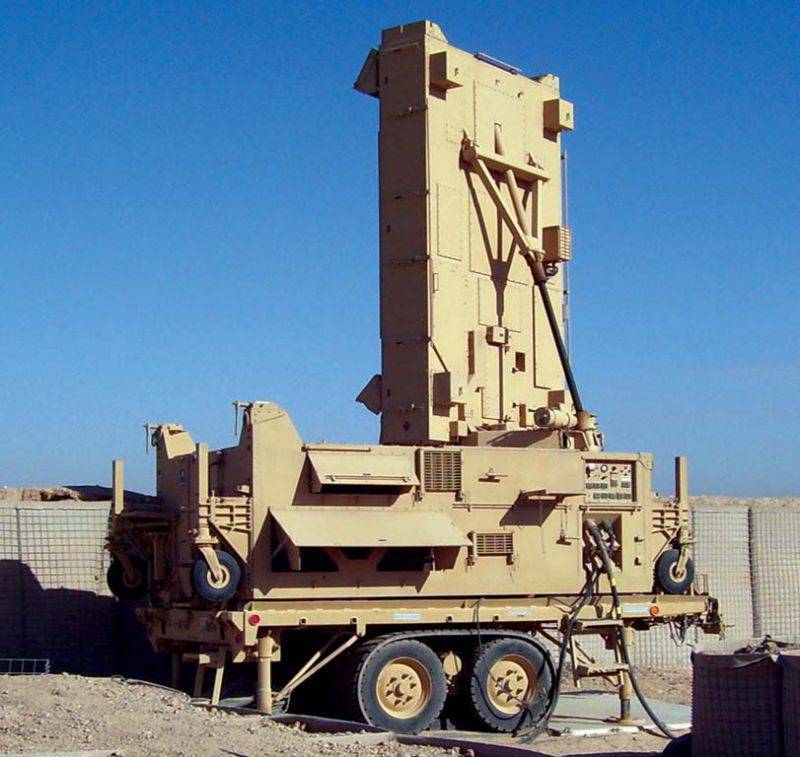
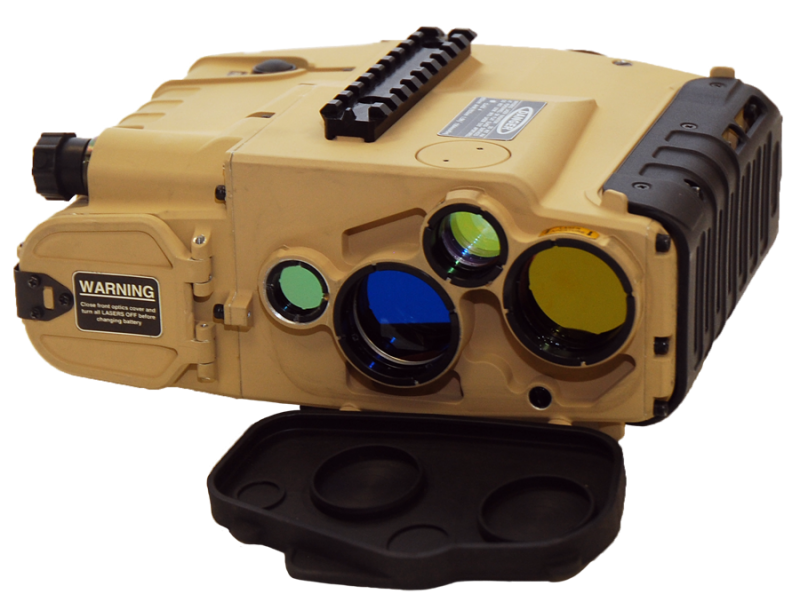
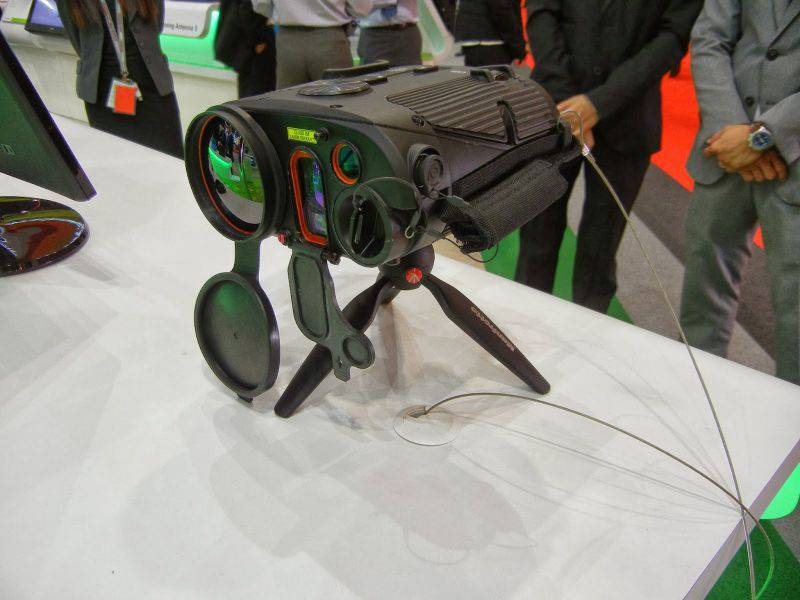
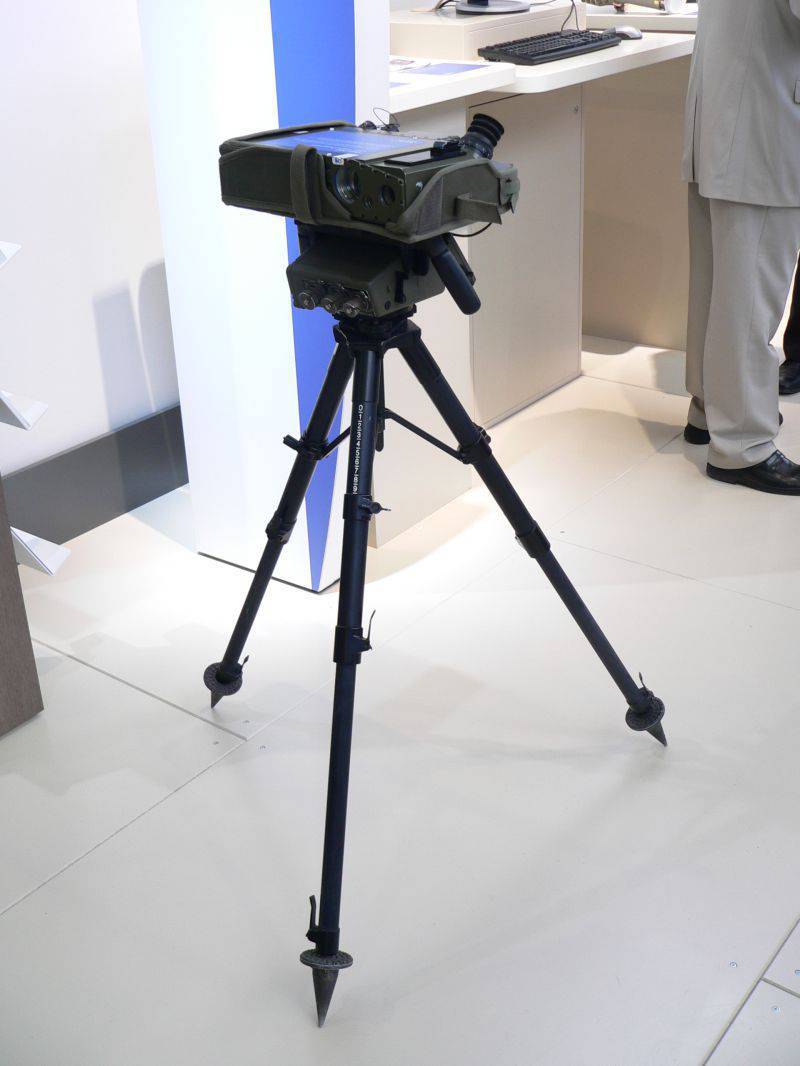
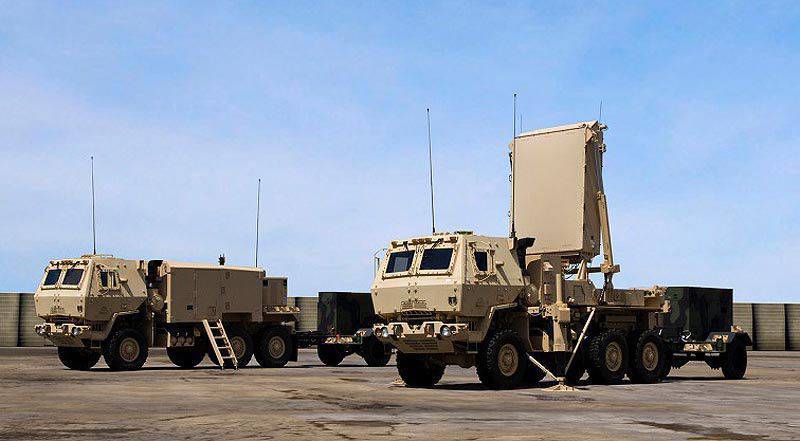
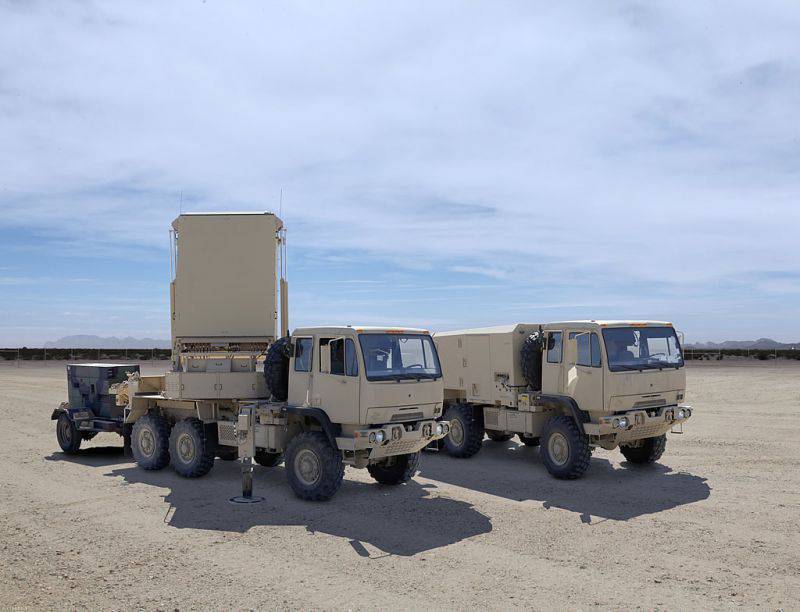
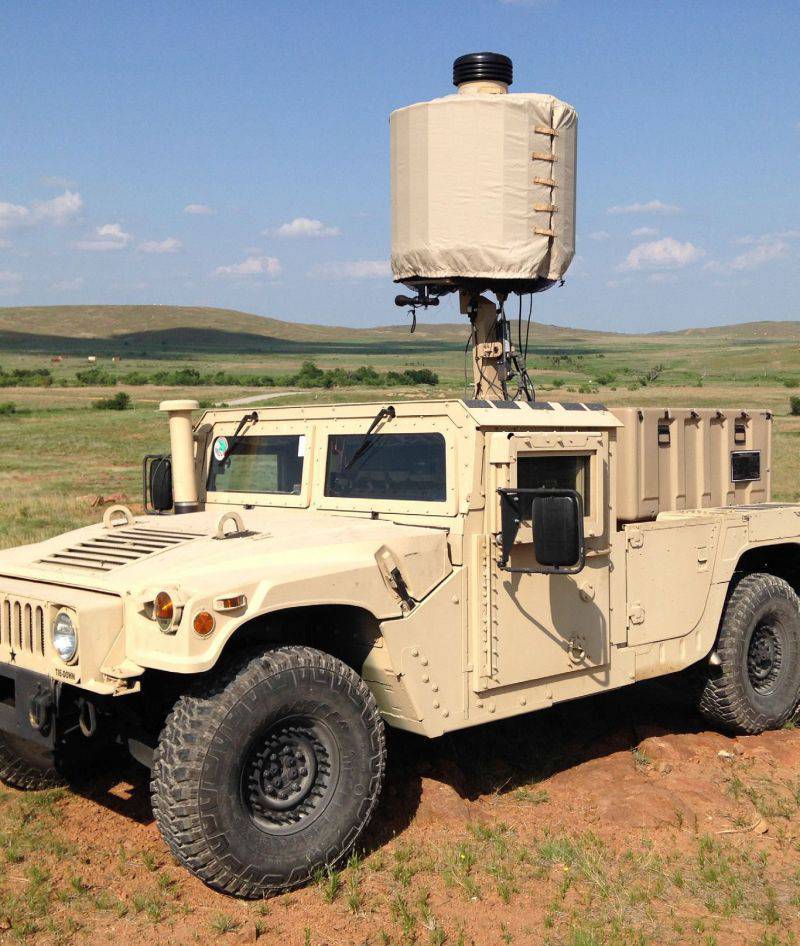
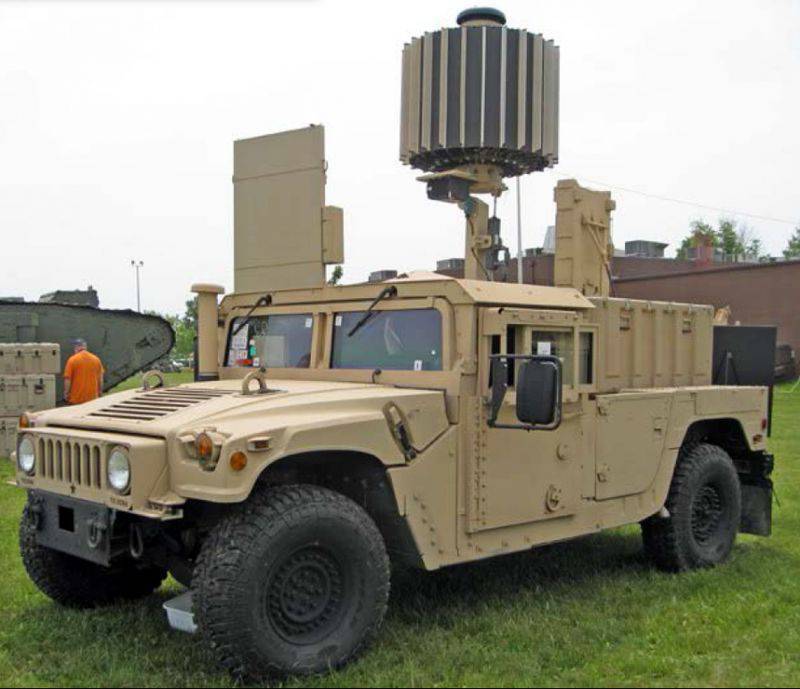
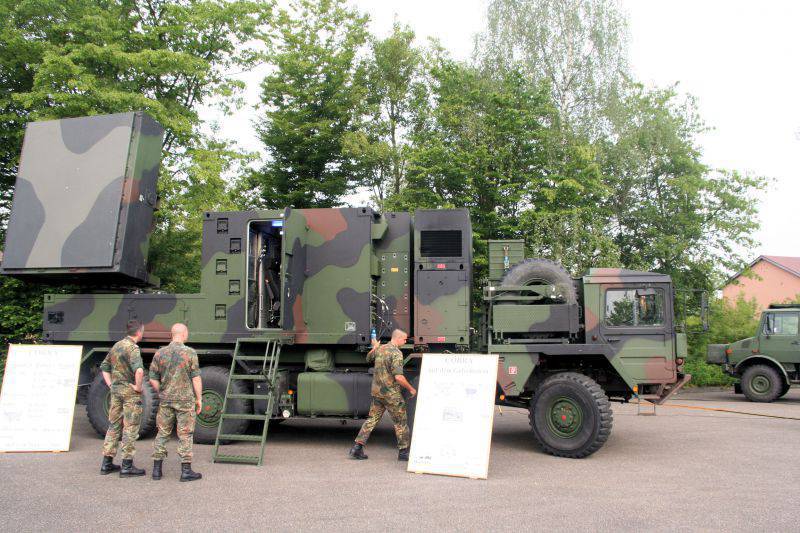
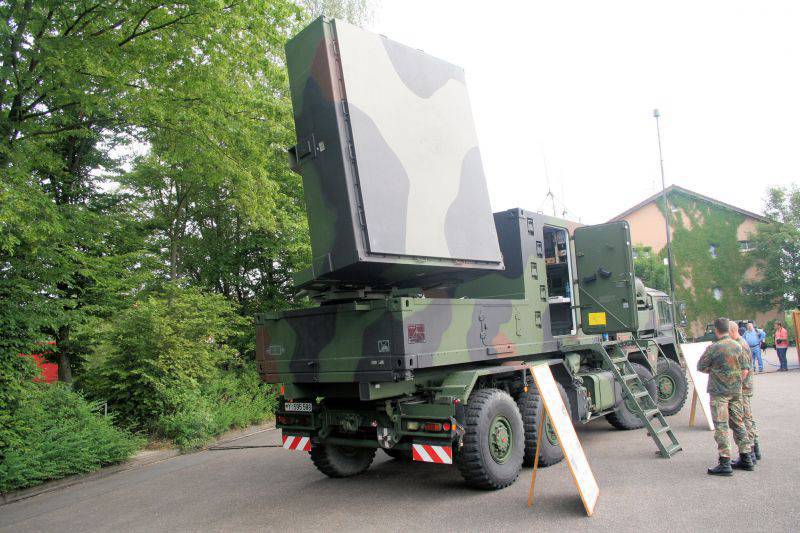
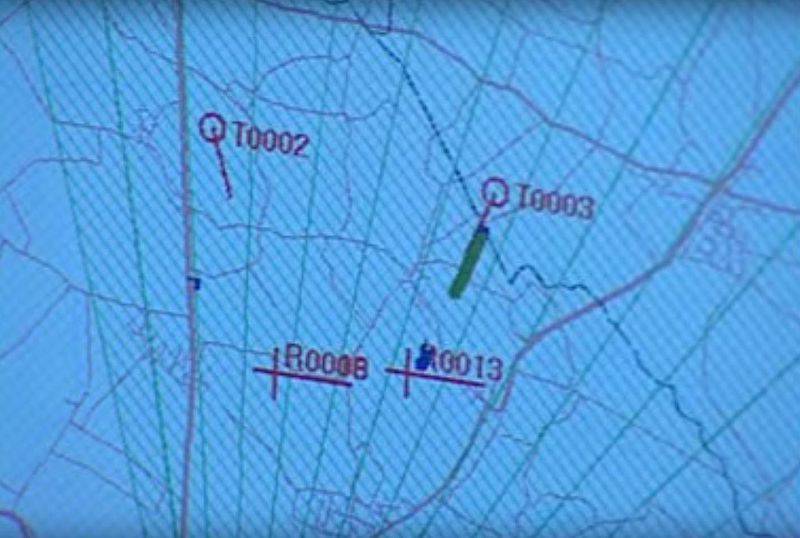
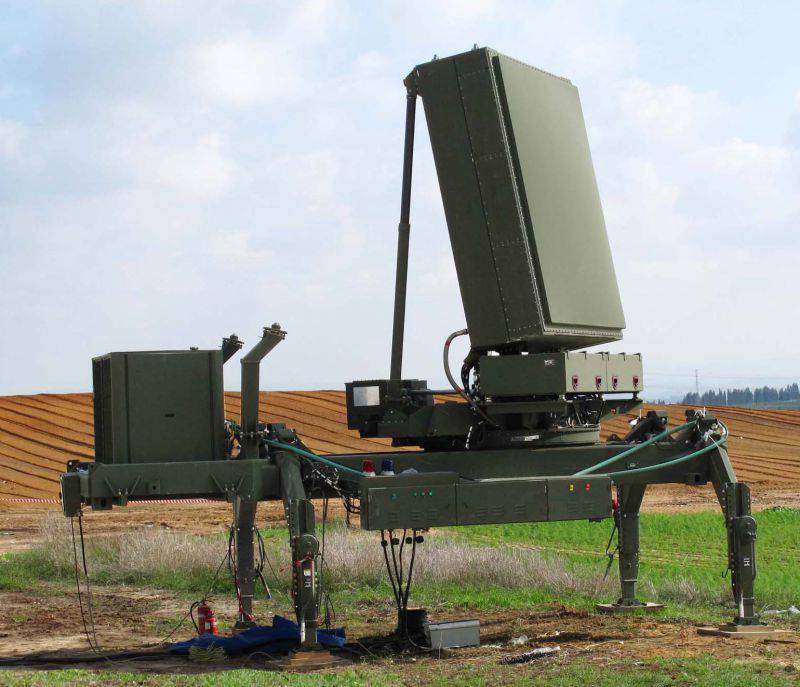
Information